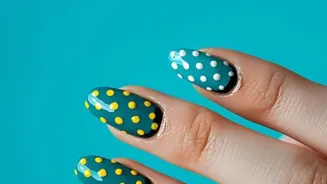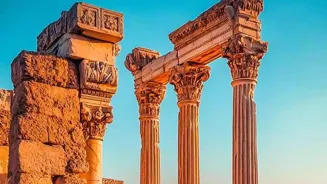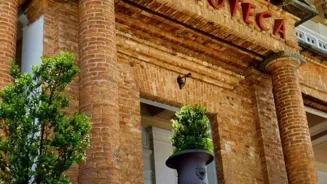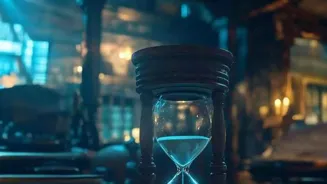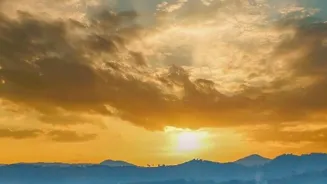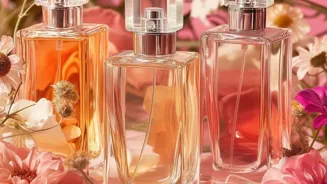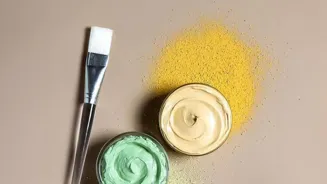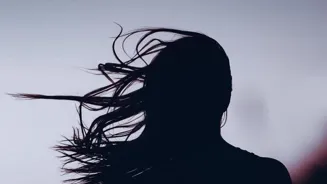Unveiling the Intriguing History of Nail Art: From Ancient Symbols to Modern Trends. Dive into the evolution of this art form!
Nail art, a popular trend among women and even some men these days, isn't a new
fad. It has a rich history, dating back thousands of years. Long before the colourful gels and intricate designs we see today, nail decoration held significant cultural and social meaning.
Getting your nails done has evolved from a simple coat of colour to a form of self-expression!
Nail art in ancient civilizations symbolized social status
The roots of nail art can be traced back to ancient civilizations. In ancient Babylon (present Iraq in the middle east), as far back as 3200 BC, men used kohl, a dark powder, to colour their nails. This wasn't about beauty, though. Nail colour signified social status.
The darker the shade, the higher your rank. Imagine that happening today! In ancient Egypt, around 3000 BC, nail colour also indicated social class. Queen Nefertiti, known for her beauty, favoured a ruby red shade. Cleopatra preferred a deep, brownish-red hue derived from henna.
Lower classes were restricted to pale colours. The Egyptians even used plant-based dyes to stain their nails, showcasing a knowledge of natural pigments and their application.
These early forms of nail decoration were about much more than mere aesthetics; they spoke volumes about a person's position in society. It's fascinating to think that something we often consider frivolous today was once a serious symbol of power and status.
This practice shows the earliest form of fashion and its trend in the past centuries.
Ancient Chinese nobility adorned nails with prestige symbols, using elaborate designs
In ancient China, nail art flourished as early as 3000 BC. Members of the Ming dynasty were especially known for their elaborate nail designs. They used ingredients like beeswax, egg whites, gelatin, and vegetable dyes to create lacquers and nail paints.
Red and black were the favoured colours, symbolizing power and prestige, just like in Egypt and Babylon. Lengthy nails were also a sign of nobility, indicating that the wearer didn't have to perform manual labour.
To protect their long, decorated nails, they often wore gold or silver nail guards, further emphasizing their high status within society. The creation of these varnishes wasn't a simple task either.
It involved careful mixing of ingredients and a keen understanding of natural dyes to achieve the desired colours. This shows that they had the earliest forms of beauty secrets and hacks to beautify them. You can get nail extensions these days with lesser hassle.
Nail art in Inca civilization: religious, cultural significance
Moving forward in time, nail decoration spread to other parts of the world. In the Inca civilization of South America, people decorated their nails with intricate eagle designs. This was also not about beauty or fashion.
Eagles was considered as an embodiment of their gods, so they designed it on their nails to show respect and worship. This form of nail art wasn’t about aesthetic appeal; instead, it was deeply intertwined with religious beliefs and cultural identity.
Each design carried a specific meaning and told a story about the individual's connection to their community and their faith. These designs are usually seen with warriors and members of empires.
The practice demonstrates how nail art, even in its earliest manifestations, could serve as a powerful means of communicating complex ideas and values. We can see its influence even today in modern trends. No one can deny that the past has been influencing the present in different aspects.
Nail polish revolutionized beauty in the 20th century, making vibrant colors accessible to all
The modern era of nail polish began in the early 20th century with the invention of automobile paint! Inspired by the glossy finish of cars, Michelle Menard formulated the first modern nail lacquer for the company Cutex in 1917.
This marked a significant turning point, making nail colour accessible to a wider audience. Before this, nail products were rather basic and lacked the vibrant colours and durability we expect today. The introduction of mass-produced nail polish revolutionized the beauty industry.
It was no longer just a privilege of the wealthy; ordinary women could now adorn their nails with colour and style. This led to experimentation with different shades and textures, paving the way for the nail art trends we see today.
In the 1920s, the flapper culture embraced nail polish, with shades like red and pink becoming increasingly popular.
Evolution of nail art influenced by cinema and celebrities
The evolution of nail art continued throughout the 20th century. The 1930s saw the rise of moon manicures, where the centre of the nail was left bare. Hollywood stars played a big role in popularizing different nail trends.
Actresses such as Rita Hayworth and Marilyn Monroe helped make manicured nails a symbol of glamour and sophistication. In the 1970s, bright colours and nail extensions came into vogue. The 1980s ushered in an era of bold and vibrant designs, reflecting the decade's overall aesthetic.
From simple elegance to outrageous expression, nail art continued to evolve, mirroring the changing trends and tastes of each generation. The impact of cinema and celebrity culture on nail fashion cannot be overstated. What we see on the big screen often translates directly into mainstream trends.
Nail art's global rise fueled by social media, gel polish, creativity
In recent times, nail art has exploded in popularity, thanks to social media platforms like Instagram and Pinterest. These platforms provide a space for nail artists to showcase their talent and inspire others. The rise of gel polish, with its durability and shine, has further fuelled the trend.
We now see an incredible range of nail art designs, from simple polka dots and stripes to elaborate 3D creations and hand-painted masterpieces. Nail art has become a global phenomenon, with artists pushing the boundaries of creativity and innovation.
With new technologies and techniques constantly emerging, the future of nail art looks brighter than ever. It is now a major part of the beauty industry.
AI Generated Content. Glance/InMobi shall have no liability for the content